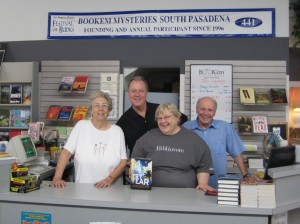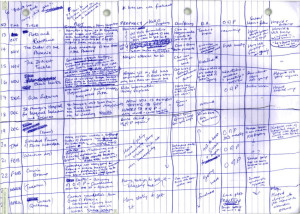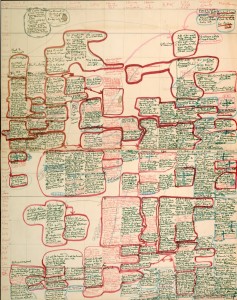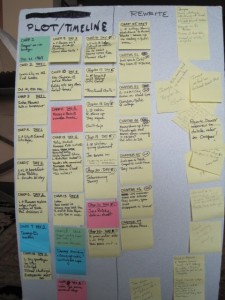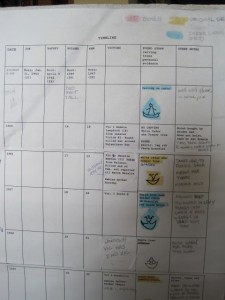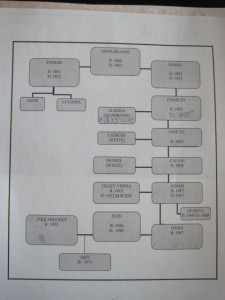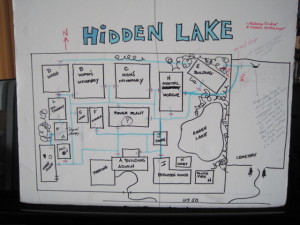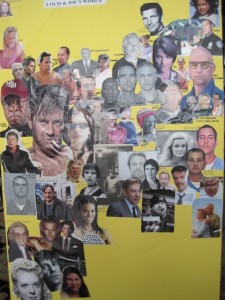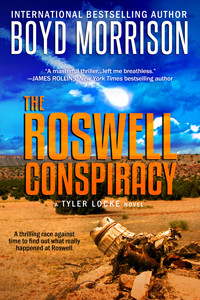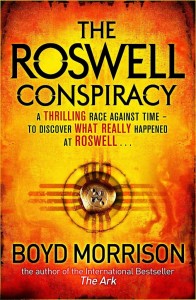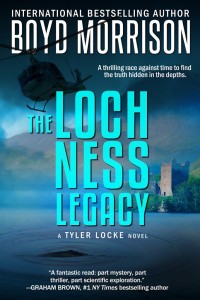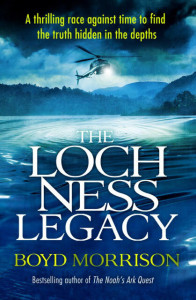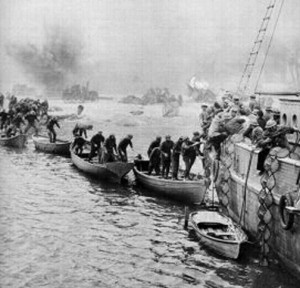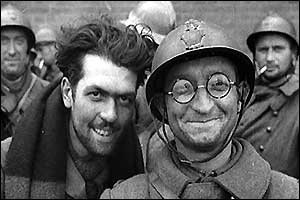What’s the bookstore situation in your neck of the woods? There are reports that indie stores are making a comeback. Is there one near you? Do you, or did you, have a favorite store? What’s your prediction of their future? What would you like it to be?
Monthly Archives: May 2013
First Page Critique – Deliverance
Jordan Dane
@JordanDane
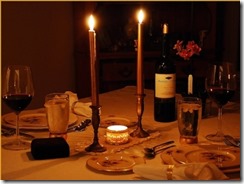
For your pleasure, I have the first page submission for a project called – Deliverance. I’ll comment on the flip side. Enjoy!
Shelia Martin changed her outfit twice, from a flair-legged jumpsuit to a long black dress with a thigh high slit on the left side. She reapplied coral lipstick that had faded an hour earlier. She brushed her hair back with her hands and headed downstairs to check on Roger’s favorite dish—grilled chicken with garlic and butter sauce, roasted asparagus, and sage rice, which she had timed to perfection so the moment he walked in the door, removed his jacket, washed his hands, she could serve him a steamy hot dinner.
At the bottom of the staircase she surveyed the set up in the living room, sparkling fire, cozy blanket, oversize floor pillows, flute glasses, Moet and Chandon for Roger, and sparkling cider for herself. As of last week, she hadn’t had a drink in three years.
Her feathered slippers clacked across the shellacked floor. She entered the kitchen with its fug of sage, garlic, onions, and vanilla. The moment Shelia heard about Roger’s new advertising contract —something he’d bid on three months earlier to help pull his business out of arrears—she decided to celebrate with a special dinner.
After twenty-three years of marriage, raising four children—two in medical school, one college freshman and a high school junior—and helping her husband launch an advertising firm, romantic rendezvous were few. Her heart pounded and butterflies knotted in her stomach, as if she were entertaining this man for the first time.
Tonight, Shelia baked a pecan pie torte, simple, easy, but his preference.
She swaddled the utensils in linen napkins, carried them into the living room and placed them on the blanket adjacent to the sweltering ice bucket. She looked at her watch wondering what was keeping Roger; their daughter Rose was expected home by ten, and Shelia was counting on a night with only her husband.
Shelia slipped off her slippers and paced the floor. The neighborhood lamppost flickered, the Maltese barked, indicating the arrival of her neighbor’s husband. She looked at her watch, ten o’clock. Rose would arrive fifteen minutes later than her curfew, her method of challenging authority.
Dinner was spoiled. She scooped up the ice bucket and took it into the kitchen. She clicked off the oven. Her stomach growled, but she had lost her appetite.
“Wasted,” she said. “Where is he?” Scraping the food into the garbage disposal, she glanced at the microwave: ten thirty.
My Critique:
I loved the meticulous attention to detail in this submission. Without telling the reader what is going on, this author is showing the woman’s expectation of perfection or her intent to please her husband, her way. I would definitely keep reading.
I love the minimal back story, without embellishment. The fact that she’s having Apple Cider, suggests she’s a recovering alcoholic, for example. Her meticulous staging of her home and the dinner suggests she’s a stay at home wife and mom who likes a tight ship. It reflects her character in what she does, rather than the author “telling” the reader this. That’s the real strength behind this piece. Rather than me focusing on craft issues, I’m able to delve into character motivation and layering of emotional content, but only to the extent of adding a different dimension that the author may not have intended. Here’s what I mean by that caveat.
There is definitely a mystery about her husband not showing up when he’s expected. As a reader, I’m hooked as to why. I don’t find this woman particularly sympathetic or warm, however, but that could be the author’s intention. It’s like Shelia wants to show off her efforts, more than her husband’s accomplishment. This dinner is HER accomplishment. She has expectations for the evening and he’s messed them up, rather than her being worried about why he’s late.
She throws out the dinner, almost as if she’s punishing him for being late (or she doesn’t realize there are starving kids in Africa), when she doesn’t know the facts. If this happened to me, I’d be trying to reach him by cell phone and worried if he’s gotten into an accident. She’s more worried about her dinner being ruined and her plans upset. It sounds as if her husband is very reliable when it comes to his arrival time, if she can time her dinner to him walking in the door. So this would mean that if he’s late, it’s a big deal, right? (Okay, in reality, who can really do this? My husband is working in the yard and I can yell out the back door that dinner is in fifteen, and he’s still late.)
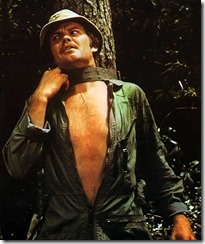 |
| Roger could have a very good reason for being late for dinner. |
If the author did NOT intend for this woman to read as cold, it would be an easy fix to add more tension when Shelia shifts from being irritated to worried. She could cover her worry by making him a plate (meticulously arranged) that she puts in the fridge, to mask how her nerves are fraying. (She could cut herself on the plastic wrap container. Lord knows I always do. The blood could be a foreshadowing of danger.) Roger’s never late. She loses her appetite from worry, not irritation that he’s messed her up. Ramp up the pacing, take off the earrings, wipe off the lipstick, look at the clock more.
But I find this writing compelling and I would definitely turn the page. Well done, mystery author! I also want to eat at Shelia’s house, except she’d probably make me dress up.
What about you, TKZers? Your comments?
The Big Move North
In 1978, my wife and I along with our two boys, moved from our hometown in Northwest Florida to Miami so I could take on the job of VP, Production at a television production facility. Seven years later in 1985, we bought our current home in Coral Springs, about 35  miles north of Miami. Here we raised our sons and watched them go on to become successful, handsome men. During our 27 years in this house, we also saw dozens of our neighbors’ children grow up and move on. Most of the parents eventually did, too. All good friends. All gone to someplace else now.
miles north of Miami. Here we raised our sons and watched them go on to become successful, handsome men. During our 27 years in this house, we also saw dozens of our neighbors’ children grow up and move on. Most of the parents eventually did, too. All good friends. All gone to someplace else now.
I wrote my first novel in a corner of our living room over a 3-year stretch, getting up before dawn and quietly typing away until it was time to shower and head off to the day job. I’ve written 6 more novels out of this house.
We’ve seen hurricanes and tornados come and go—watched huge trees fall over in what seemed like slow motion but were taken out by 100 mph winds.
We’ve swam a thousand times in our pool, many times with a margarita in hand and friends beside us as the BBQ smoke filled the air.
We’ve had Halloween parties on our front lawn while we showed spooky movies to a couple dozen kids on a 6-foot TV.
We’ve watched life end and life begin on this street—laughed and cried more than most people. We’ve been warmed by the Florida sun way more than chilled by the north wind. And more times than I can remember, we’ve said that we lived in paradise.
Three weeks ago, we sold our beloved home and are packing to move. My wife is retiring from teaching after years of devoting her life to children. I retired from my day job a number of years ago to write full time. So now we are moving north. Northwest Florida, that is. I guess I need to start looking around at truck rentals from somewhere like truck trader bc to get us ready for the move. We can’t wait to go back to our hometown and our roots where so many of our family members live. Back to a place that’s hot in the summer and cold in the winter. Where the beaches are whiter than sugar, the leaves turn colors in the fall, and the seafood is so fresh it slept in the Gulf last night.
Our new home is on the Blackwater River with a 100-foot pier that offers a perfect place to 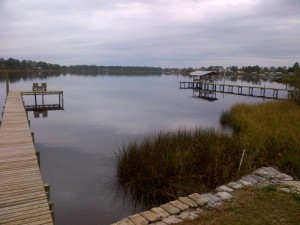 sip wine and stare across the water every evening until the only sounds are the breeze through the pines and an occasional mullet jumping.
sip wine and stare across the water every evening until the only sounds are the breeze through the pines and an occasional mullet jumping.
My WiFi will reach to the end of the dock, and that’s where I’ll be everyday with my laptop writing my next thriller. If you’re ever in the area, come join us for a glass of red wine and a killer view.
Plotting visually:You’ve got to see it to believe it
One of the biggest problems I think many manuscripts have is that the reader can’t VISUALIZE the physical action ie the moving around in physical space of the characters. Because the writer has not done an adequate job of describing places and actions, we are confused. And maybe it’s simply because the writer did not take the time to “draw” things out in his own mind. It’s important that a writer be able to clearly SEE a story so that the reader can as well.
Bingo. Once I drew it, I realized I had everything wrong, including what side of the highway they were on.
What about you guys? I know we’ve got pantsers and plotters out there. Any picture makers? Send me your examples and we’ll do a follow up. Send them to killzoneblog at gmail dot com. (Sorry, gotta spell it out to avoid spammers) Show me your pictures!
Judging A Book
I honestly don’t know how important covers are in the ebook age. A print book facing out in a store is designed to catch your eye so that you’ll pick it up and peruse the back cover summary, maybe check out a few pages of the writing. You’ll be able to see tiny details on the cover, as well as possible blurb. Here’s what my cover for THE ARK looks like at full size:
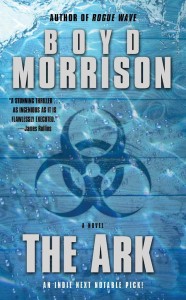
Now here it is at the size you’ll see when browsing the genre lists on Amazon:
Other than my name and the title, which you’ll see anyway next to the cover, you have a hard time making anything out besides the general color scheme. It gets a bit bigger once you click on it to go to the book’s Amazon page, but even at that size you can’t read the blurb. It’s mainly eye candy, to make the brain go, “Oooh, pretty!”
Of course, I’m not advocating putting out a book with a nondescript white cover. The cover will be used for promotional purposes, you’ll want to have it on your website, and it has to hold its own against the other ebooks that have covers. It also has to look professional. An amateurish cover or a poorly worded description are the quickest ways to convey the message that the contents inside haven’t been created with any care, either.
What I don’t know is how often the cover influences buying behavior. It would be fascinating for Amazon to show a simple list of titles and authors with a one-line description and see if that made any difference in which books readers gravitated toward. In fact, it would be interesting for Amazon to let an author craft a Tweet-sized logline to list under the cover, title, and author name.
At the very least, you want a cover that catches the attention of a reader who would like your type of book and accurately represents the story that a reader will find inside. If you are traditionally published, the publisher will design it for you, and you might get consultation on it. They may even listen to you if you object strongly enough to the concept.
If you’re a self-published author, don’t do it yourself unless you are a graphic designer. Slapping something together with Powerpoint will scream amateur. I highly recommend you find someone to do it for you, and there are several options.
The first option is to hire a freelance designer. For my two self-published books, I hired Kim Killion at Hot Damn Designs to create covers that have a similar branding theme since they’re both in the Tyler Locke series. She’s easy to work with, quick, and charges very reasonable prices. Using stock photography, she has produced covers for Allison Brennan, T. Jefferson Parker, and Larry Bond, as well as scores of romance authors. Here are the two covers she designed for me on the left next to their UK counterparts on the right:
I think Kim’s covers are just as good as the British covers, and I highly recommend working with her. There are plenty of other cover designers out there, but make sure you check out their portfolios and get references before working with them.
Another option is a site called Designcrowd. The concept is interesting, although I haven’t tried it myself. You submit a project (such as a book cover) along with a price you are willing to pay and a deadline for submissions. Graphic designers from around the world then submit ideas to you on spec, and you can choose the best one (or none at all if you don’t like any of the choices). I’ve looked at some of the portfolios, and there are some very creative designs in the submissions. If you’re looking for a more unusual design or an illustration that doesn’t have photos in it, Designcrowd might be a good way to go.
I’m sure self-publishers would love to know what other choices are out there. Are there any additional recommended options for cover creators?
Of Miracles, Sacrifice and Story
Foods That Jumpstart Your Creative Heart
Reader Friday: How Far From Yourself Can You Go?
Today, discuss how far you think a writer can reasonably go, away from his or her own life. What are the dangers? The rewards?
How far away have you ever gone? How’d that work out for you?
First page critique: ARCTIC FIRE
Here is today’s first page critique. My thoughts follow the text.
ARCTIC FIRE
Ben was excited. It would be his first year as a full time counselor at scout camp, a hard to get position he’d dreamed of since first attending as a Tenderfoot four years earlier. His brother Ian, three years younger, was a First Class scout attending his second camp and seemed proud of his brother’s position. Ian would only be at Gorsuch for a week while Ben would be there for two months. Ben hoped to give his brother something to attain to.
Ben was an exemplary scout, a member of the Order of Arrow. At fifteen he was within six months of earning his Eagle Scout rank. Only ten percent of all scouts complete the demanding path to Eagle. It had been hard work and he was going to complete it a full eighteen months ahead of schedule.
After two sessions of the National Youth Leadership Training School at Camp Denali he knew how to lead boys. He was aware of not only how to teach them the skills every scout should know, but knew how to prepare for any emergency he could think of, how to keep them safe on campouts and hikes, how to perform advanced first aid and wilderness survival.
And to top it all off, maybe most important for many of the scouts in his charge, Ben Sanders knew how to tell stories. It was a skill he had learned from his father whose skill at filling the boys imaginations with visions of mountain trolls, sea spirits and brave warriors was amazing. The only props his father used for his tales were a ratty old gray wool blanket and his story stick.
The well-worn birch walking stick had been made about the time Ben was born. Carved images of bears, wolves and eagles decorated the shaft just below the handle, worn smooth and shiny by his father’s own grasp, the oil and sweat of his palm rubbing the white wood to a sheen as if it had been polished and rubbed with varnish. And now, his father was handing the stick to him.
There’s not much to say about this. Unfortunately, it’s all backstory. Nothing happens. There is no story question, no tension, no suspense, no crisis (physical, mental or spiritual). I have no idea what the story is about other than a well-worn birch walking stick may be involved. Aside from instances of passive voice, the writing is clean, mature, and matter of fact. But there is no grab, no hook, no reason for me to keep reading.
Good luck to the author and thanks for submitting to TKZ.
On-Site Research
On-site research enhances your novel with authenticity. It’s your chance to make the story come alive for readers when you write the scene that inspired your visit. To get started, have an idea of what you want to research before you leave home. Begin with either a quick pass-through tour or research on the Internet. This allows you to sketch the scene ahead of time, even writing it in your manuscript, while filling in the details later.
For example, I have a research trip planned to Arizona. I’ve already written the synopsis for this story, so that tells me I have to trek through a copper mine, stay overnight at a dude ranch, visit a ghost town, stay at a haunted hotel, note the terrain and plants and animal life, and in general, walk through the steps my sleuth will be taking.
For HIGHLIGHTS TO HEAVEN, book five in my Bad Hair Day mystery series, I included a scene in Mount Dora, Florida. We had driven through there one afternoon, spending a couple of hours shopping and eating lunch. That brief survey was enough for me to write the scene in the book where my hairdresser sleuth, Marla Shore, tracks down a suspect’s sister to interview her.
After writing the first draft of the Mount Dora scene, I knew I had to make a return trip to fill in details to my satisfaction. Equipped with a notebook, I headed back for an overnight stay. This brings to mind the two most important tools to bring with you: notepad and camera. You cannot possibly remember all the details you will explore. It’s best to document them so you can refer to your materials when you’re back home. If I hadn’t gone to this town to note these particulars, I might have missed the chirping bird sound at traffic intersections when the light turned red.
I did the same for Cassadaga, a spiritualist camp in Central Florida where Marla goes for a reading from a psychic. This was the first time I’d had a reading, and it was an eerie experience. Here I used a tape recorder as an additional tool so when I got home, I could transcribe the entire interview into my computer. This became the basis for Marla’s reading in DIED BLONDE after I changed my rendition to suit the story.
SHEAR MURDER, my latest title in this series, has a wedding scene in fictional Orchid Isle that’s based on Harry P. Leu Gardens in Winter Park. Again, I went there with camera and notebook to walk the trails as my heroine and scribble down the details.
You need to see things with your writer’s eye instead of the usual tourist experience, and our view is much more detail oriented.
POINTS TO CONSIDER
1. Do preliminary research to sketch your scene.
2. Plan your trip to focus on the details you’ll need to acquire.
3. Bring a notebook and camera, possibly a digital recorder.
4. If you plan to interview people, bring one of your books, a supply of flyers, and business cards to present yourself as a professional writer. Compose a list of questions ahead of time. Direct the interview to the topics you need addressed. Write down quotes from your subject. Ask if you can run the scene by them for an accuracy check after it’s written. For informal interviews, chat up residents and get their take on things in their home town. Try to capture unique elements like favorite expressions, mannerisms, and speech patterns.
5. Once on site, walk the path of your protagonist.
Observe with your Five Senses. Take detailed notes and don’t mind the curious stares of pedestrians as you stop abruptly to scribble in your notepad. Just make sure you’re not in the middle of the street.
A. Sight
Sight means looking at the world with a writer’s eye. Say you’re on a ship. What do you see when you stroll on deck: An outdoor clock? A crew member hosing down the deck? A coil of rope? What makes the scene unique? On a city street, what do the windows on a building bring to mind? Do they yawn like open mouths? Are they blank like vacant eyes? Note small details like overhead electric wires, stray dogs, chickens in a yard, tilted signs.
Imbue your observations with your character’s attitude. Always remember to stay in viewpoint. Then look for interesting ways to describe things, i.e. a reflective nature like water, glistening like a cobweb in sunlight, glossy like a polished piano. You’re not only writing about what you see, but also about its special characteristics or emotional associations.
B. Smell
What does your protagonist sniff: A lady’s floral perfume? Oak-aged burgundy? Beer and pretzels? Pine trees and wood smoke? Vanilla and nutmeg? Diesel fuel or rain-tinged ozone? What memories does this scent evoke?
C. Sounds
Close your eyes. What do you hear? Birds warbling, ducks quacking, construction hammering, engines whining, water dripping? See how many different sounds you can distinguish.
D. Touch
Outside, is your skin pounded by the hot sun? Blasted by a ceaseless wind? Caressed by a warm breeze? When you walk, do you trip over the uneven pavement? Is the surface spongy like wet sand? How does your character react to the sensation?
E. Taste
The sense of taste is often related to your nose. If you smell sea air, you may taste salt on your tongue. If you smell ripe grapes, you may taste wine. Try to detect a taste where there may be none obvious. Is it a pleasing flavor or unpleasant to your protagonist?
Be Sure to Observe:
PEOPLE: Physical appearance, mode of dress, speech patterns, gestures
FOOD: Meals, restaurants, foods unique to the area
NATURE: Birds, trees, animals, bugs, flowers
ARCHITECTURE: residential housing, government buildings, commercial districts
EXPERIENCES: Adventurous, Funny, Scary
Be Sure to Bring Home: Maps, tourist brochures, books on locale, menus, postcards, photos
Now your notebook is filled with details describing what you’ve seen, smelled, tasted, touched, and heard during your research trip. Your job is to go home and transcribe this into your book so your reader feels she is there with your heroine, seeing from her eyes and living the story with her. This is your greatest gift to the reader, that you remove her from her own world and transport her to a new place for a few hours of escape. “I felt like I was there,” are sweet words from a fan to an author.
Make it happen.

